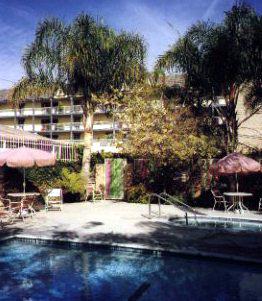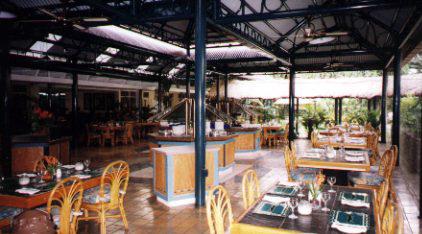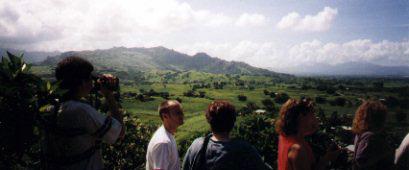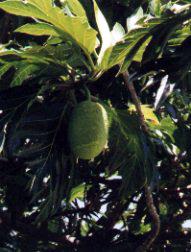


We found a reasonably priced hotel near the airport via the internet
and reserved a room the same way. The search criteria selected was:
A non-smoking room, Access via airport shuttle, Price under $100.
It came up with a Best Western, senior discount (55+), 2 miles from LAX,
for $62.50. Not bad for LA!
 The
next leg of our journey was the flight from LAX to Fiji. Flight #811
is a 747 Air Pacific jet which took 11 hours to reach its destination.
The flight was a little over half full so the passengers quickly spread
out to make use of as many seats as possible. Most of them tried
to catch a little nap during the flight. We arrived at 10:30 in the
evening, Fiji time. The air was warm and humid, smelling green and
lush from the tropical vegetation.
The
next leg of our journey was the flight from LAX to Fiji. Flight #811
is a 747 Air Pacific jet which took 11 hours to reach its destination.
The flight was a little over half full so the passengers quickly spread
out to make use of as many seats as possible. Most of them tried
to catch a little nap during the flight. We arrived at 10:30 in the
evening, Fiji time. The air was warm and humid, smelling green and
lush from the tropical vegetation.
Our trip through customs was relatively painless, and we were soon on
the bus headed for our hotel where we were greeted with fresh fruit juice
and information about what was available for us during the next day.
We then headed for our air conditioned rooms where we tried to sleep while
fighting jet lag and excitement.

Throughout our trip a continental breakfast was provided as part of
the package. The Tanoa International Hotel restaurant seating area
was outside under a canopy. The walkways between the hotel lobby
and the rooms were covered by a thatched roof which kept off the sun plus
the rain showers that are typical in a tropical locale.

A bus tour the next day took us around part of the island. At
the Garden of the Sleeping Giant, a nursery containing between two and
three thousand different varieties of orchids, we saw not only orchids
but a variety of tropical plants.

At a lookout point we could see much of the island. Fiji
is a very poor country. The main sources of income are from sugar
cane and tourists, and the cane crop has failed the past two years due
to weather conditions. The official language is English so there
was no problem talking with anyone, except tourists.

We toured a typical village. The Chief's hut was always built
on a platform and had four doors. The door you were allowed to enter
depended on your rank in society. The thatched roof keeps the hut
cool on warm humid days and warm on cool days. This type of roof
material can last from six to ten years depending on the weather.

Throughout the village there were many bread fruit trees, brought by
the English ("The Mutiny on the Bounty"). The fruit of this tree
is large, typically six to eight inches high by four to six inches across.
It is a soft mushy fruit and can be prepared in many ways. We did
not get a chance to try to any of that, but the fresh bananas, pineapple,
quava and mangos were delicious.

The city of Nadi is not very large and, obviously, very poor.
The best building in the city was the shop that sold to the tourists.
At the far end of the city was a Hindu temple that had just been completed.
We were not allowed to approach the temple but could see from the street
that it was decorated very beautifully. One attribute of this temple
is that it is built without the use of any measuring instruments.
While talking to our guide we learned that products carved from wood represent some of the best work by native artisans. No tour is complete without a stop for shopping, and we purchased a medium-sized carved wooden turtle. The turtle and the fish have always been symbols of good luck for the natives and a food source.
Fiji is made up of nearly 400 islands. The main island, that we
were on, is the largest of the group and has few beaches. Those that
exist are overused and not the best. To find the pristine sands and
crystal clear waters shown in the movies you need to go to some of the
smaller islands. Next trip!